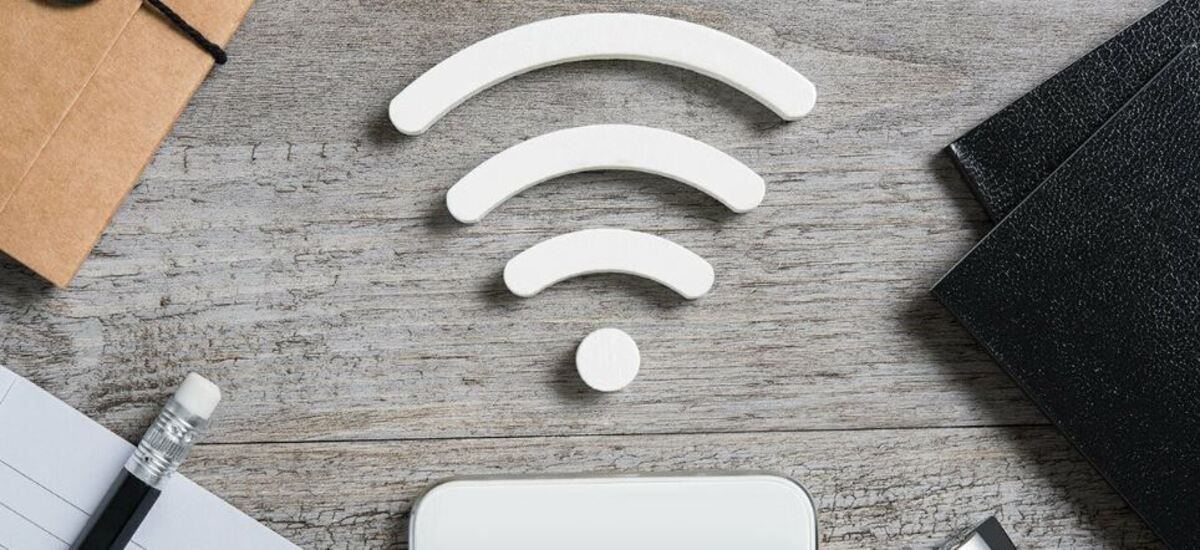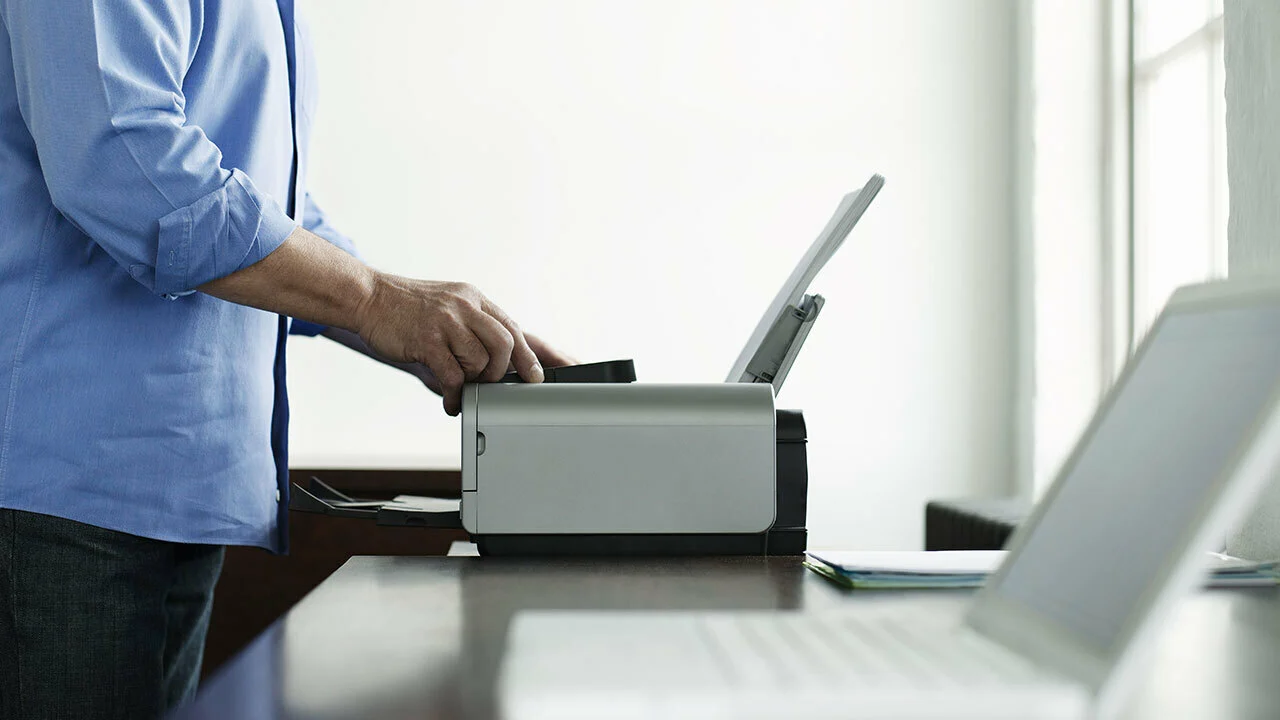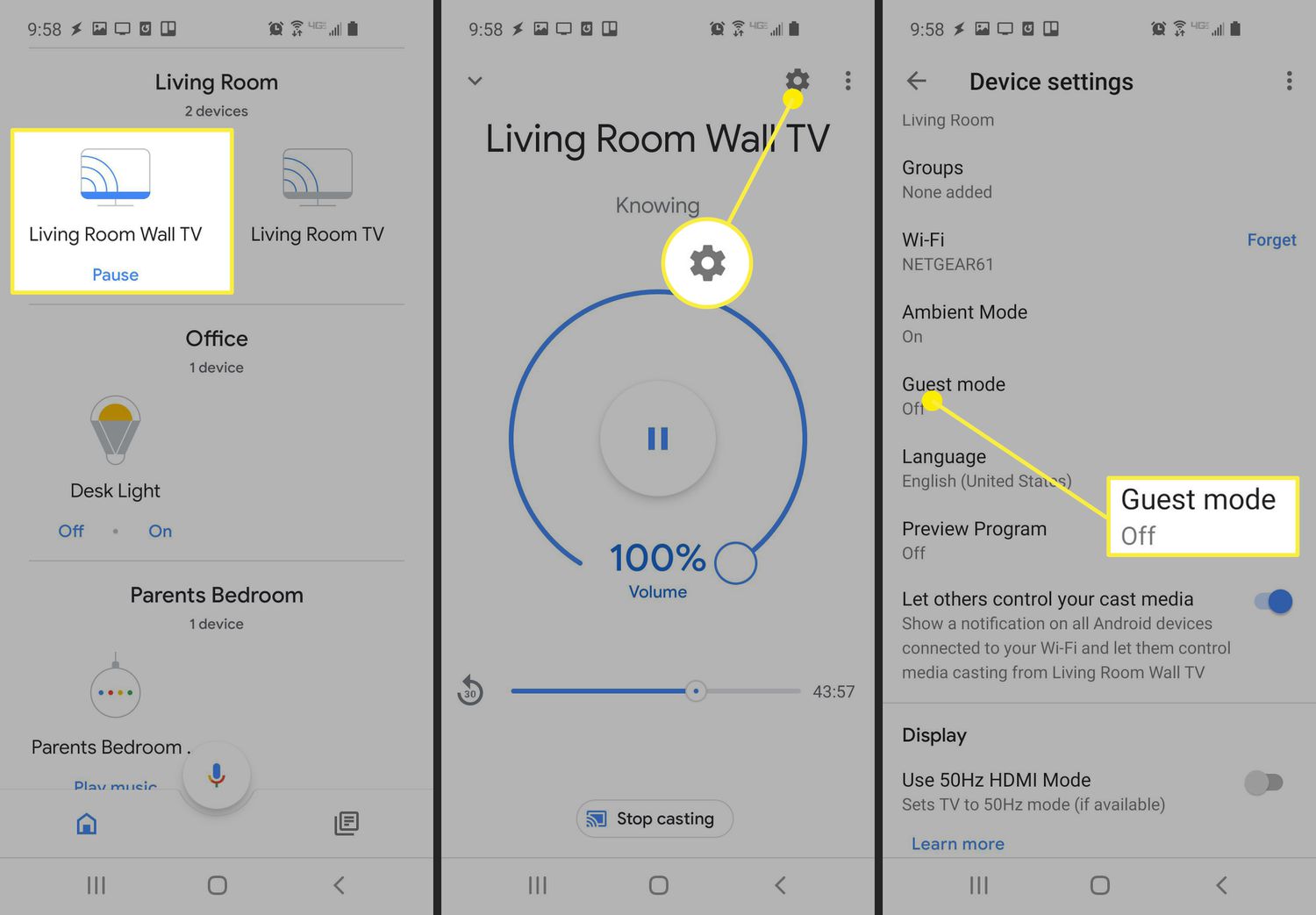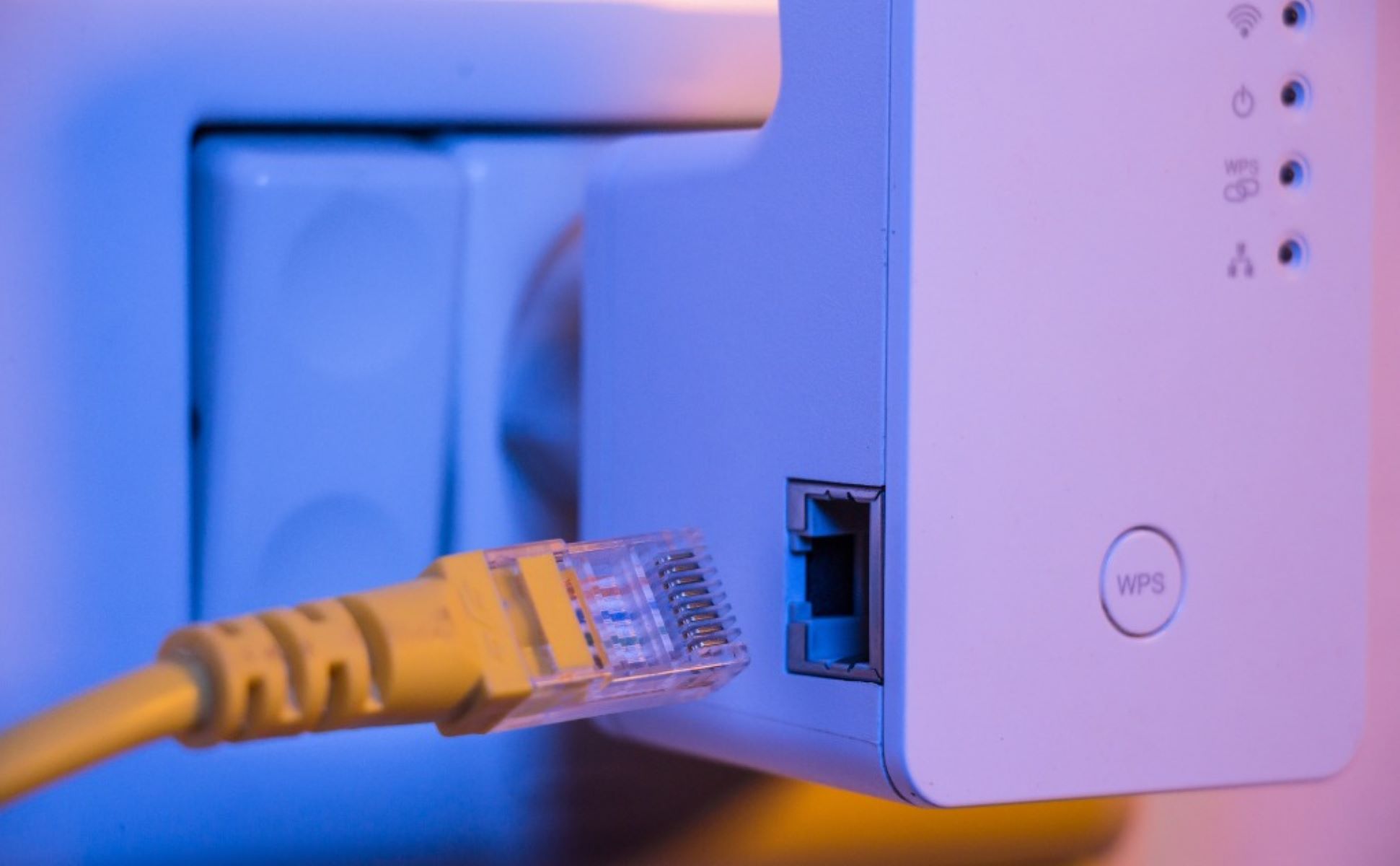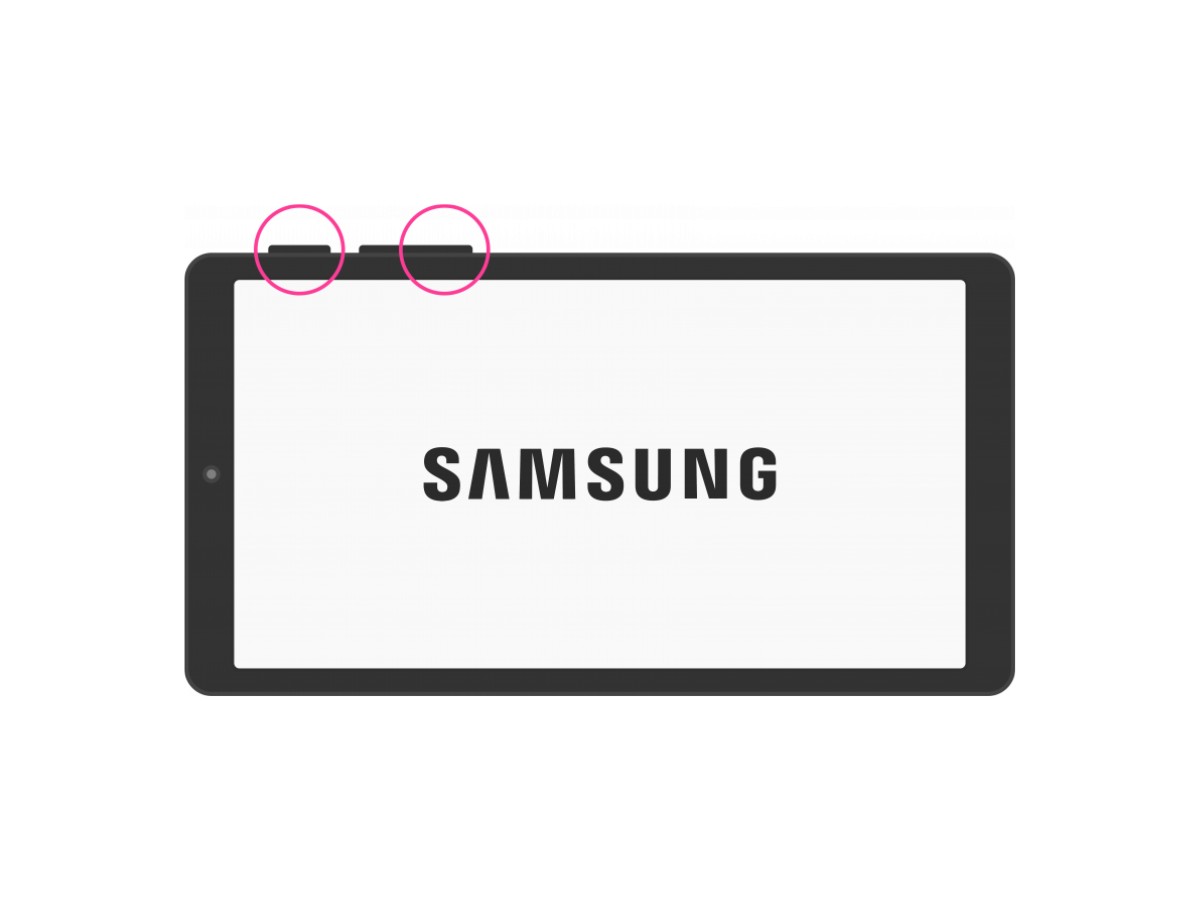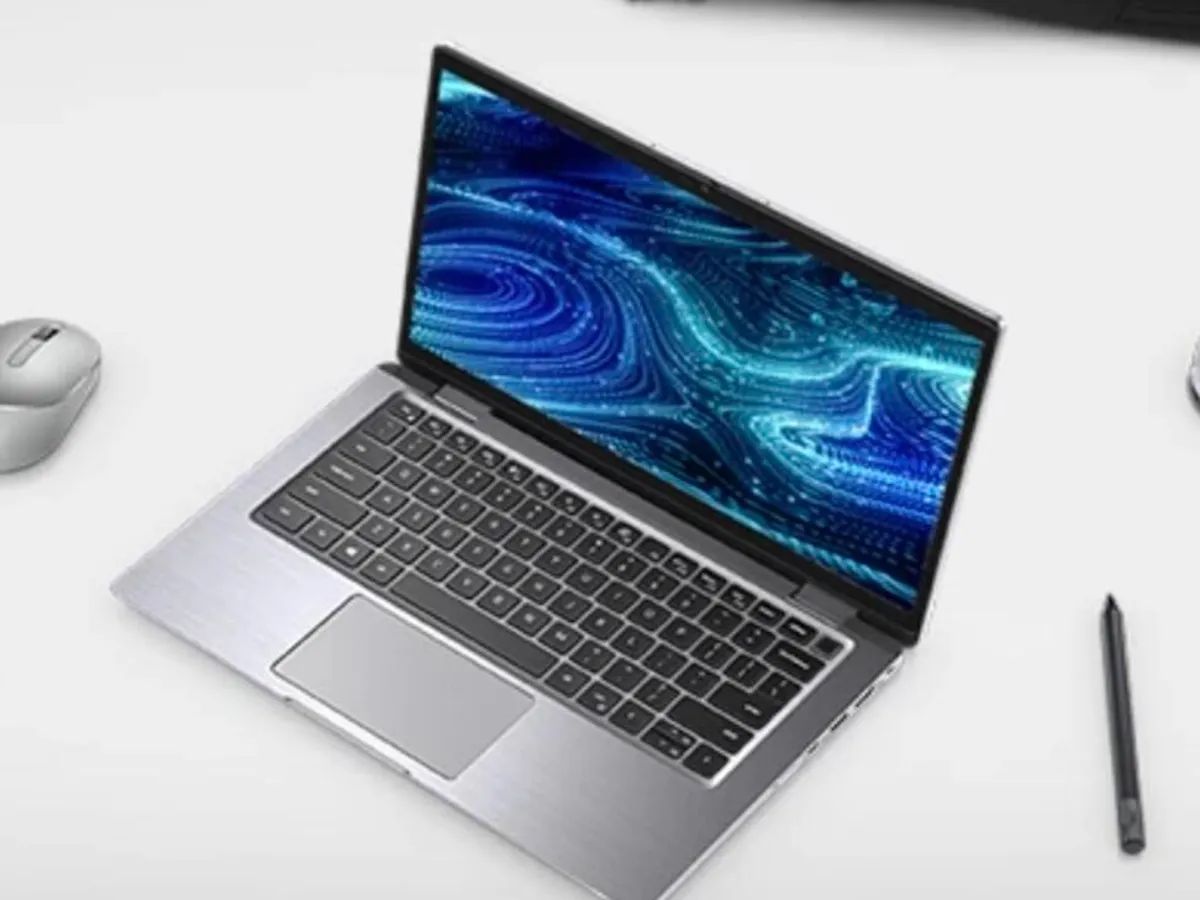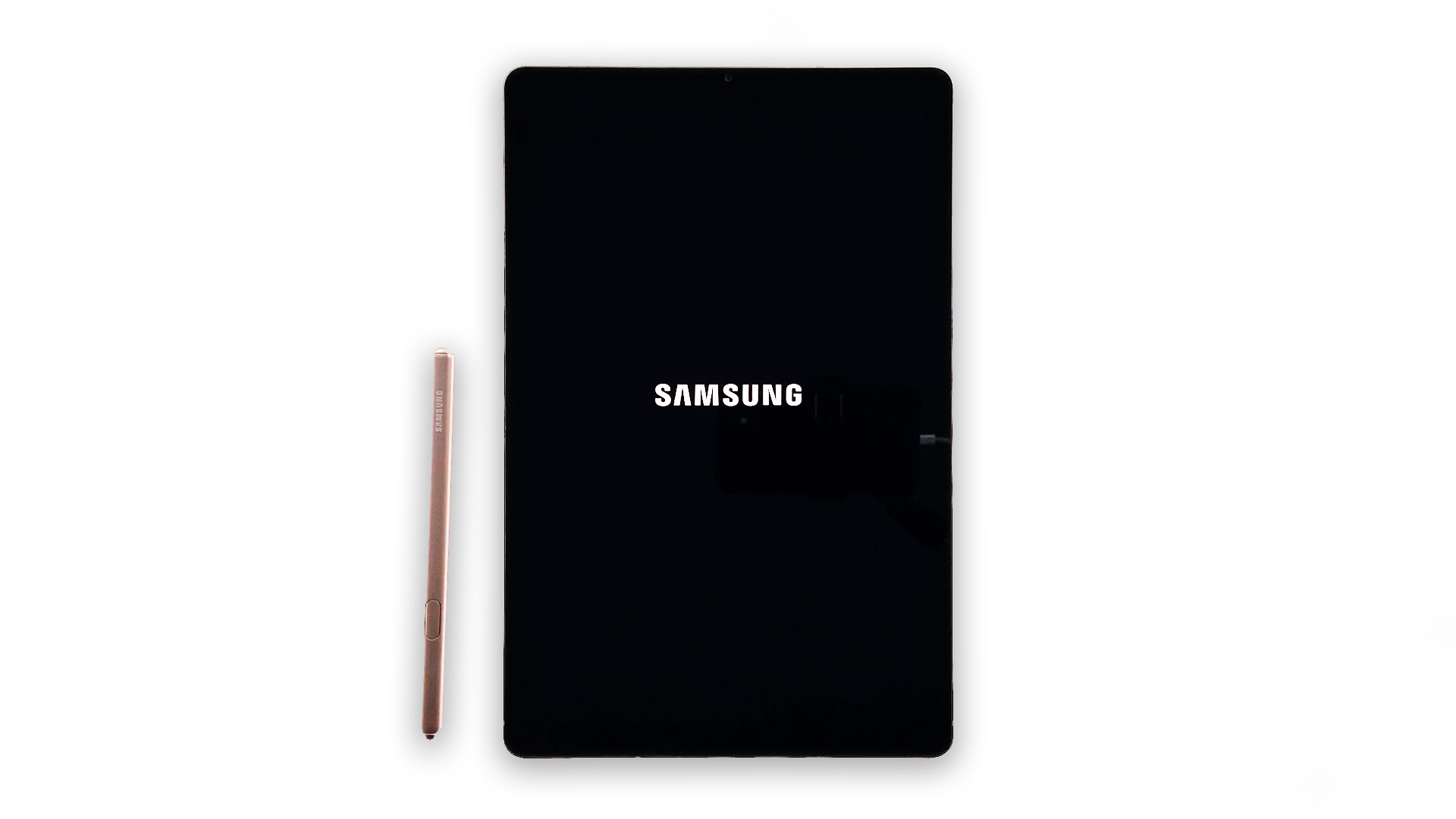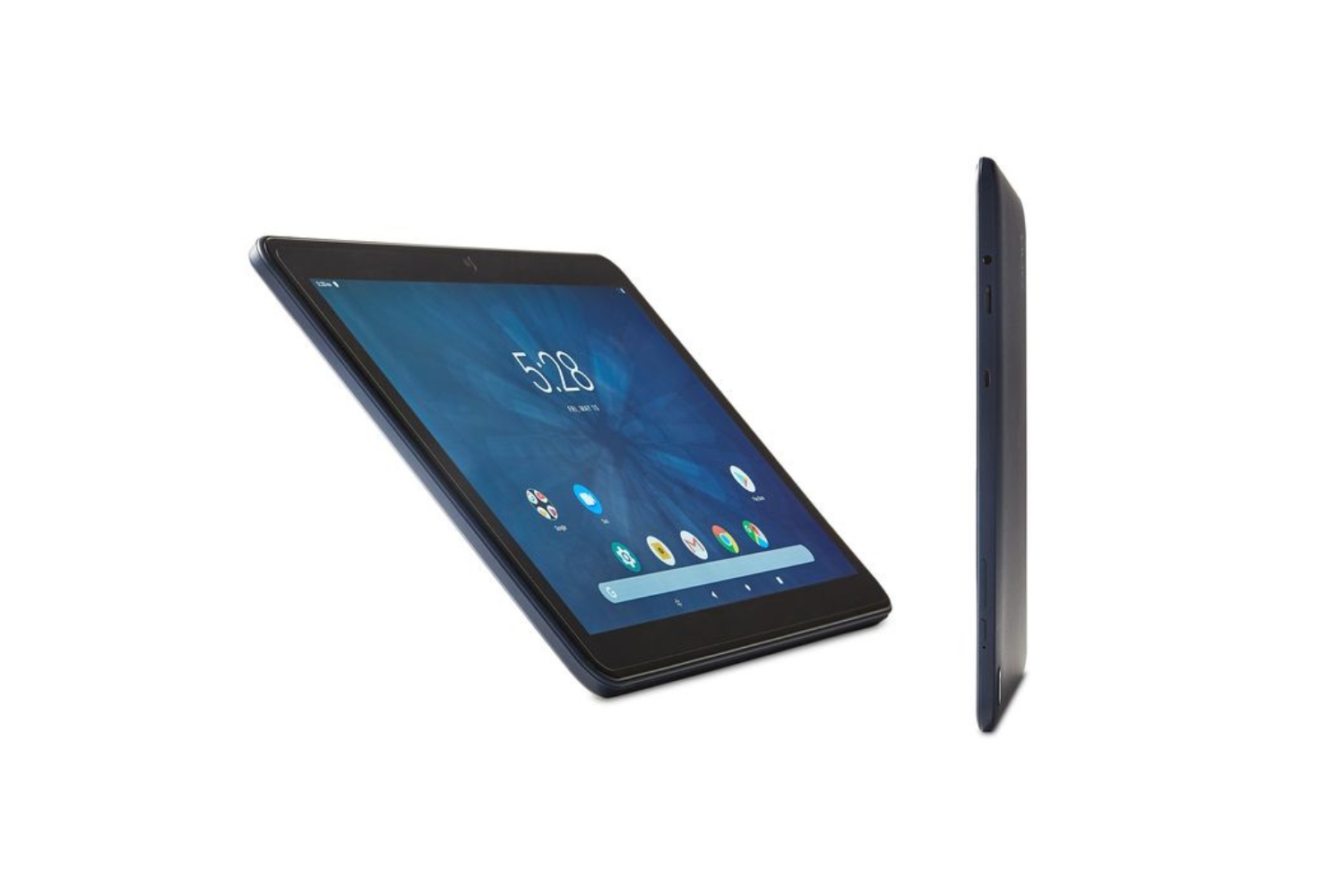Common issues with tablet hotspot connectivity
Tablet hotspot connectivity can sometimes be a frustrating experience, especially when you’re unable to connect to your desired network. Fortunately, many common issues can be easily resolved with a few troubleshooting steps. In this section, we will discuss some of the most common issues that users face when trying to connect their tablets to hotspots.
One common issue is that the tablet’s hotspot feature might not be turned on. It’s important to ensure that the hotspot feature is enabled in your tablet’s settings. Sometimes, this option can be hidden or disabled by default, so it’s worth checking the settings menu to confirm that the hotspot is turned on.
Another issue that can arise is incorrect hotspot settings on the tablet. It’s crucial to verify that the hotspot settings on your tablet are configured correctly. Check the network name (SSID), security type, and password. Even a small typo in the password can prevent your tablet from connecting to the hotspot, so double-check this information.
Compatibility is also an essential factor to consider. Different tablets support different network frequencies and bands. Confirm that your tablet is compatible with the network used by the hotspot. Some tablets might not support certain bands or frequencies, which can hinder the connection.
Additionally, ensure that the Wi-Fi on your tablet is turned on. It sounds simple, but sometimes the Wi-Fi feature can accidentally be switched off, preventing your tablet from connecting to any network, including the hotspot.
Network interference can cause connectivity issues as well. If there are other devices nearby that use the same frequency range as the hotspot, it can lead to signal interference. Moving away from these devices or changing the channel on the hotspot can help resolve the problem.
It’s important to double-check the password entered for the hotspot. The password is case-sensitive, so make sure that the uppercase and lowercase letters are correctly entered. If you’re uncertain about the password, you can try to forget the network on your tablet and then reconnect, entering the password again.
Restarting both your tablet and the hotspot device is also a useful troubleshooting step. Sometimes, a simple restart can fix any temporary glitches or connectivity issues that may be preventing your tablet from connecting to the hotspot.
Updating your tablet’s software can also resolve any compatibility or connectivity issues. Check for any available software updates and install them if necessary. Software updates often include bug fixes and enhancements that can improve network connectivity.
If none of the above steps work, you can try resetting the network settings on your tablet. This will restore the network settings to their default configurations. Keep in mind that this will also remove any previously saved Wi-Fi networks, so you will need to re-enter the passwords for those networks.
If all else fails, it’s recommended to reach out to your service provider for further assistance. They can help troubleshoot the issue and provide guidance specific to your tablet and hotspot setup. Alternatively, you can contact the customer support of your tablet manufacturer for technical support and more advanced troubleshooting steps.
Troubleshooting steps for tablet hotspot connection problems
If you’re experiencing difficulties connecting your tablet to a hotspot, don’t worry – there are several troubleshooting steps you can take to resolve the issue. In this section, we will outline some practical troubleshooting steps that can help you get your tablet connected to a hotspot quickly and efficiently.
1. Check the hotspot status: Ensure that the hotspot device is turned on and properly functioning. Verify that it is receiving a stable internet connection from the source network.
2. Restart the hotspot and tablet: Power off both the tablet and the hotspot device, then turn them back on. Restarting the devices can often resolve temporary glitches that may be causing connectivity issues.
3. Move closer to the hotspot: Sometimes, weak signal strength can hinder the connection between the tablet and the hotspot. Try moving closer to the hotspot device to establish a stronger and more stable connection.
4. Forget and reconnect to the hotspot: On your tablet, go to the Wi-Fi settings and forget the network associated with the hotspot. Then, reconnect to the network by entering the correct password. This can help refresh the connection and resolve any authentication issues.
5. Check for software updates: Ensure that your tablet’s operating system is up to date. Updating the software can often address compatibility issues and improve overall connectivity performance.
6. Disable VPN or proxy settings: If you have any VPN (Virtual Private Network) or proxy settings enabled on your tablet, consider disabling them temporarily. Sometimes, these settings can interfere with the hotspot connection.
7. Clear network settings cache: Clearing the cache of network settings on your tablet can help remove any conflicting or outdated configurations. Go to the settings menu, locate the network settings, and choose the option to clear the cache.
8. Reset network settings: If all else fails, you can try resetting the network settings on your tablet. This will restore the network settings to their default configurations. Keep in mind that this will also remove any previously saved Wi-Fi networks, so you will need to re-enter the passwords for those networks.
9. Check for network interference: Other electronic devices or appliances operating on the same frequency band can cause interference with the hotspot connection. Move away from such devices or change the channel on the hotspot device to avoid interference.
10. Seek professional assistance: If none of the troubleshooting steps listed above resolve the issue, it may be time to seek professional assistance. Contact your tablet manufacturer’s customer support or consult with a technical expert who can provide further guidance and assistance specific to your device.
By following these troubleshooting steps, you can enhance the chances of resolving tablet hotspot connection problems. Remember that patience and persistence are key when troubleshooting any technical issues. With a bit of perseverance, you’ll likely be able to establish a stable and reliable connection between your tablet and hotspot.
Ensure your tablet’s hotspot is turned on
Before troubleshooting any hotspot connectivity issues on your tablet, it’s essential to ensure that the hotspot feature is turned on. The hotspot feature allows your tablet to act as a wireless access point, enabling other devices to connect to it and share its internet connection. Here are the steps to check and enable the hotspot on your tablet:
1. Open the settings menu: Access the settings menu on your tablet by tapping on the settings icon, typically represented by a gear or a cogwheel.
2. Locate the “Network & Internet” or “Connections” section: In the settings menu, look for the section related to network and internet connectivity settings. The exact labeling may vary depending on your tablet’s manufacturer and operating system.
3. Navigate to the Mobile Hotspot or Personal Hotspot option: Within the network settings section, you should find an option for Mobile Hotspot or Personal Hotspot. Tap on it to access the hotspot settings.
4. Toggle the hotspot switch: In the hotspot settings menu, you’ll find a switch or button to enable or disable the hotspot feature. Ensure that the switch is turned on or the button is toggled to the “On” position.
5. Configure the hotspot settings: Once the hotspot is enabled, you may have the option to customize the hotspot settings. You can set a network name (SSID) for your hotspot, select a security type (such as WPA2), and set a password for accessing the hotspot.
6. Save the hotspot settings: After configuring the hotspot settings, save the changes. Your tablet’s hotspot is now turned on and ready to accept connections from other devices.
7. Connect devices to your tablet’s hotspot: On the devices you wish to connect to the hotspot, go to the Wi-Fi settings and select your tablet’s hotspot network from the list of available networks. Enter the password if prompted, and the device should establish a connection to your tablet’s hotspot.
Remember, not all tablets support the hotspot feature, so it’s important to check your tablet’s specifications or user manual to ensure that it has this capability. If the hotspot option is not available in your tablet’s settings menu, it may be due to hardware limitations or a customized version of the operating system.
Ensuring that your tablet’s hotspot feature is turned on is the first step in troubleshooting any hotspot connectivity issues. By following these steps, you can enable the hotspot functionality on your tablet and start sharing your internet connection with other devices.
Check your tablet’s hotspot settings
When experiencing connectivity issues with your tablet’s hotspot, it’s crucial to review and verify the hotspot settings on your device. Incorrect configurations can prevent other devices from connecting to your hotspot or cause network instability. In this section, we will outline the necessary steps to check and adjust your tablet’s hotspot settings:
1. Open the settings menu: Access the settings menu on your tablet by tapping on the settings icon, typically represented by a gear or a cogwheel.
2. Navigate to the Mobile Hotspot or Personal Hotspot option: Within the settings menu, locate the section related to network and internet connectivity settings. Look for the Mobile Hotspot or Personal Hotspot option and tap on it to access the hotspot settings.
3. Review the network name (SSID): Check the network name (SSID) of your hotspot. Ensure that it is recognizable and distinguishable from other nearby networks. You can modify the network name by tapping on the corresponding field and entering a new name.
4. Verify the security type: Check the security type used by your hotspot. WPA2 (Wi-Fi Protected Access 2) is the most secure option and is recommended for protecting your hotspot from unauthorized access. If necessary, you can adjust the security type by selecting the appropriate option in the hotspot settings.
5. Confirm the hotspot password: Review the password set for your hotspot. Ensure that it is strong and not easily guessable. If you suspect any issues with the password, you can change it by entering a new password in the corresponding field.
6. Consider adjusting additional hotspot settings: Some tablets offer additional configuration options for the hotspot, such as maximum number of connections, network band preference, or automatic hotspot timeout. Depending on your tablet, you may want to review and adjust these settings to optimize your hotspot experience.
7. Save the hotspot settings: After reviewing and adjusting the hotspot settings, save the changes to apply the new configurations. Your tablet’s hotspot is now updated with the correct settings.
Once you have verified and adjusted your tablet’s hotspot settings, it’s important to inform the devices you want to connect to the hotspot about these changes. On the devices you wish to connect, go to the Wi-Fi settings, select your tablet’s hotspot network from the available networks list, and enter the updated password if prompted.
By checking and adjusting the hotspot settings on your tablet, you can ensure the proper configuration of your hotspot and resolve any connectivity issues related to incorrect settings. Remember to periodically review these settings to maintain a secure and reliable hotspot connection.
Verify your tablet’s network compatibility
When troubleshooting hotspot connectivity problems on your tablet, it’s important to consider the network compatibility of your device. Different tablets support various network frequencies and bands, and mismatches can lead to connection issues. In this section, we will guide you through the steps to verify your tablet’s network compatibility:
1. Check your tablet’s specifications: Look for your tablet’s specifications either in the user manual or on the manufacturer’s website. Specifically, search for information regarding supported network frequencies and bands.
2. Compare with the hotspot’s network specifications: Obtain the network specifications of the hotspot you are trying to connect to. This information can usually be found in the hotspot’s user manual or manufacturer’s website. Cross-reference the hotspot’s supported frequencies and bands with your tablet’s specifications.
3. Confirm compatibility: Compare the supported network frequencies and bands of your tablet with those of the hotspot. Ensure that they are compatible and match at least on some level. If there is a significant mismatch or if your tablet does not support the frequencies and bands used by the hotspot, you may experience connection issues or be unable to connect at all.
4. Consider using a device that supports both networks: If your tablet is not compatible with the hotspot’s network, you may want to consider using a device that is compatible with both networks. This could be another tablet, smartphone, or a dedicated hotspot device that supports the required frequencies and bands.
5. Verify coverage: Apart from frequency and band compatibility, it’s crucial to ensure that the hotspot’s network has sufficient coverage in your location. Weak signal strength or limited network coverage can also cause connectivity issues. Check the hotspot’s coverage map or consult with your service provider to determine if the network coverage is available and reliable in your area.
6. Consider network upgrades or alternative solutions: If your tablet is not compatible with the hotspot’s network, and using another device is not an option, you may need to explore alternative solutions. This could include upgrading your tablet to a model that supports the desired network frequencies and bands, or considering alternative internet connectivity options such as a different hotspot provider or a wired internet connection.
By verifying the network compatibility of your tablet, you can ensure that it supports the required frequencies and bands to establish a successful connection with the hotspot. If there is a mismatch, consider using a device that supports both networks or exploring alternative solutions to meet your internet connectivity needs.
Make sure your tablet’s Wi-Fi is turned on
When facing hotspot connectivity issues on your tablet, one common oversight is forgetting to turn on the Wi-Fi feature. Without enabling Wi-Fi, your tablet will not be able to detect or connect to any available networks, including the hotspot you are trying to connect to. In this section, we will go through the necessary steps to ensure that your tablet’s Wi-Fi is turned on:
1. Access the settings menu: Open the settings menu on your tablet by tapping on the settings icon, usually represented by a gear or a cogwheel.
2. Navigate to the Wi-Fi settings: Look for the Wi-Fi or Network settings option within the settings menu. Tap on it to access the Wi-Fi settings.
3. Toggle the Wi-Fi switch: In the Wi-Fi settings, locate the switch or button to turn on the Wi-Fi feature. Make sure that the switch is toggled to the “On” position or that the button shows that the Wi-Fi is enabled.
4. Select your desired Wi-Fi network: Once the Wi-Fi is turned on, your tablet will start scanning for available networks. A list of the detected networks will be displayed on the screen. Select the desired network, which is usually the name (SSID) of the hotspot you are trying to connect to.
5. Enter the Wi-Fi password (if applicable): If the selected network is secured with a password, you will be prompted to enter the correct password. Make sure to enter the password accurately, paying attention to uppercase and lowercase letters, as Wi-Fi passwords are case-sensitive.
6. Establish the Wi-Fi connection: Once the correct Wi-Fi network and password are entered, your tablet will attempt to establish a connection. It may take a few moments to connect, so be patient. Once connected, your tablet will display a Wi-Fi symbol in the status bar or on the screen, indicating a successful connection.
7. Verify the Wi-Fi connection: Once connected to a Wi-Fi network, verify that your tablet is successfully accessing the internet. Open a web browser or any internet-dependent app and ensure that you can browse websites or access online content without any issues.
By ensuring that your tablet’s Wi-Fi feature is turned on, you enable it to scan for and connect to available networks, including the desired hotspot. Remember to double-check the Wi-Fi settings if you continue to experience connectivity issues, as it’s possible that the Wi-Fi feature may have been accidentally disabled.
Check for network interference
When you’re unable to connect your tablet to a hotspot, network interference may be the culprit. Interference from other electronic devices operating on the same frequency range as the hotspot can disrupt the Wi-Fi signal and hinder the connection. In this section, we will discuss how to check for network interference and alleviate its effects:
1. Identify potential sources of interference: Look for devices or appliances in close proximity to your tablet and the hotspot. Common sources of interference include cordless phones, microwave ovens, baby monitors, Bluetooth devices, and wireless speakers. Take note of any devices that might be causing interference.
2. Move away from potential sources of interference: If possible, physically move your tablet and hotspot away from the devices identified as potential sources of interference. Putting some distance between your devices and the interfering gadgets can help reduce the impact of interference.
3. Change the channel on the hotspot: Most Wi-Fi routers and hotspots offer the option to change the channel they’re using to transmit the Wi-Fi signal. Access the administration settings of your hotspot, usually through a specific IP address or a dedicated app, and look for the channel settings. Experiment with different channel options to find one with less interference.
4. Switch to the 5GHz frequency band: If both your tablet and the hotspot support the 5GHz frequency band, consider switching to it. The 5GHz band is generally less crowded and more resistant to interference than the commonly used 2.4GHz band. However, note that the range of the 5GHz band may be shorter than the 2.4GHz band.
5. Use a Wi-Fi analyzer app: Install a Wi-Fi analyzer app on your tablet to assess the surrounding Wi-Fi networks and identify the channels with the least interference. These apps can help determine which channels are congested and which ones are more suitable for a stable connection.
6. Upgrade to dual-band Wi-Fi: Consider upgrading to a tablet and hotspot that support dual-band Wi-Fi. Dual-band devices can connect to both 2.4GHz and 5GHz networks, allowing you to switch between bands and select the one with the least interference.
7. Reposition the hotspot: Experiment with different physical placements of the hotspot to find an optimal position with reduced interference. Sometimes, even a slight adjustment in placement can significantly improve the Wi-Fi signal and connection stability.
8. Reduce the number of connected devices: If several devices are simultaneously connected to the hotspot, it can put strain on the network and increase the likelihood of interference. Disconnect any unnecessary devices to minimize network congestion and potential interference.
By checking for network interference and taking steps to minimize its effects, you can improve the chances of establishing a more stable and reliable connection between your tablet and the hotspot. Remember to periodically reassess for potential sources of interference, as the surrounding environment and devices can change over time.
Verify the password entered is correct
One of the most common reasons for connectivity issues between a tablet and a hotspot is an incorrect password entry. Even a small typing error in the password can prevent your tablet from connecting to the hotspot. In this section, we will guide you through the steps to verify the password entered and ensure that it is correct:
1. Double-check the password: Carefully review the password you entered for the hotspot. Pay attention to capitalization, special characters, and any numerical digits. Ensure that the password you entered matches exactly as it was set for the hotspot.
2. Try re-entering the password: If you suspect that the password you entered may be incorrect, try forgetting the hotspot network on your tablet and then reconnecting. Go to the Wi-Fi settings, locate the hotspot network, and select the option to forget the network. Then, search for the network again and enter the password once more.
3. Refer to the hotspot device: If you’re still unable to connect, consult the user manual or official documentation of the hotspot device to retrieve the correct password. Manufacturers often provide default passwords or instructions on how to set a new password for the hotspot. Make sure you have the accurate password for the hotspot network.
4. Consider manually entering the password: Some devices have the option to enter the password manually instead of relying on automatic connection methods. In the Wi-Fi settings on your tablet, look for an option to input the password manually. This can help eliminate any possible auto-correct or other input-related issues.
5. Confirm with the hotspot owner: If you’re trying to connect to a hotspot that is not under your control, such as a public or shared hotspot, reach out to the owner or administrator of the hotspot. Confirm that you have the correct password or inquire if any password changes have been made recently.
6. Try the hotspot password on another device: If possible, attempt to connect another device, such as a smartphone or laptop, to the same hotspot using the same password. This can help determine if the issue lies with the tablet or if there is a problem with the hotspot itself.
During the password verification process, it’s essential to pay close attention to the password details and ensure accurate entry. A small mistake or typo can lead to connectivity issues and prevent your tablet from connecting to the desired hotspot. Take the necessary steps to verify and enter the correct password, and you’ll increase the chances of a successful connection.
Restart your tablet and hotspot device
If you’re experiencing connectivity issues between your tablet and a hotspot, restarting both your tablet and the hotspot device can often resolve temporary glitches and restore the connection. In this section, we’ll guide you through the steps to restart your tablet and hotspot device:
1. Restart your tablet: Begin by turning off your tablet. You can typically do this by holding down the power button until a menu appears, and then selecting the option to power off. Once your tablet is powered off, wait for a few seconds.
2. Power on your tablet: After the brief pause, press and hold the power button again to turn your tablet back on. Allow your tablet to fully boot up and reach the home screen or lock screen before proceeding to the next step.
3. Turn off your hotspot device: Locate the power button or switch on your hotspot device, usually found on the device itself or in the settings menu. Toggle the switch or press the power button to turn off the hotspot. Wait for a few seconds after powering it off.
4. Power on your hotspot device: After the short wait, press the power button or toggle the switch to turn on your hotspot device. Allow the device to fully power up and establish the network connection.
5. Reconnect your tablet to the hotspot: Once both your tablet and the hotspot device are restarted, go to the Wi-Fi settings on your tablet. Locate the hotspot network in the list of available networks and select it. Enter the correct password if prompted and wait for your tablet to establish a connection to the hotspot.
6. Test the connection: After reconnecting to the hotspot, verify that your tablet can access the internet and browse websites or use online applications without any issues. A successful connection indicates that the restart resolved the connectivity problem.
Restarting both your tablet and the hotspot device is a simple yet effective troubleshooting step that can resolve transient issues that may be affecting the connection. It clears any temporary configuration glitches and refreshes the network settings, allowing your tablet and the hotspot to establish a stable connection. If the problem persists, consider trying additional troubleshooting steps or reaching out to your service provider for further assistance.
Update your tablet’s software
Updating your tablet’s software can often resolve compatibility issues and improve overall connectivity performance. Outdated software may contain bugs or lack the necessary updates to support the latest Wi-Fi standards. In this section, we will discuss the steps to update your tablet’s software:
1. Check for software updates: Access the settings menu on your tablet by tapping on the settings icon, typically represented by a gear or a cogwheel. Look for the option labeled “Software Update” or “System Update.” Tap on it to check for available updates.
2. Download and install updates: If an update is available, follow the on-screen instructions to download and install it. Ensure that your tablet is connected to a stable Wi-Fi network to avoid interruptions during the update process. It’s also advisable to have sufficient battery power or plug your tablet into a power source while updating.
3. Wait for the update process to complete: Depending on the size of the update, it may take some time to download and install. Be patient and avoid interrupting the process by turning off your tablet or disconnecting it from the power source. Once the update is finished, your tablet will automatically restart.
4. Verify the software version: After the restart, go back to the settings menu and check the software version of your tablet. Ensure that it reflects the latest update you installed. This information can typically be found under “About Phone” or “About Tablet” in the settings menu.
5. Test the connectivity: With the updated software, attempt to connect your tablet to the hotspot again. Verify that you can establish a stable connection and access the internet without any issues. If the problem persists, move on to other troubleshooting steps or seek further assistance.
Regularly updating your tablet’s software is crucial for maintaining the best performance and compatibility with different networks and devices. Software updates often include bug fixes, security enhancements, and improvements to network connectivity. Therefore, it’s recommended to schedule automatic updates or periodically check for updates manually to ensure that your tablet is running the latest software version.
Reset network settings on your tablet
If you’re still experiencing connectivity issues between your tablet and a hotspot, resetting the network settings on your tablet can help resolve underlying configuration conflicts. Resetting the network settings will restore the network settings to their default state, allowing you to start fresh with a clean slate. In this section, we will guide you through the process of resetting network settings on your tablet:
1. Access the settings menu: Open the settings menu on your tablet by tapping on the settings icon, typically represented by a gear or a cogwheel.
2. Locate the network settings: Look for the section dedicated to network and internet or connections settings within the settings menu. The exact labeling may vary depending on your tablet’s manufacturer and operating system.
3. Find the option to reset network settings: Within the network settings section, search for an option related to network reset or network settings reset. It may be labeled as “Reset Wi-Fi, mobile, and Bluetooth” or similar. Tap on this option to proceed.
4. Confirm the network reset: Before proceeding with the reset, your tablet may display a warning message informing you about the consequences of resetting network settings. Read the warning carefully and confirm your action to proceed with the reset.
5. Reboot your tablet: After confirming the network reset, your tablet will automatically restart. Allow the tablet to reboot and complete the reset process.
6. Reconnect to Wi-Fi and hotspot: Once your tablet has restarted, go to the Wi-Fi settings and scan for available networks. Locate the hotspot network and attempt to connect to it again. Enter the correct password if prompted.
7. Verify the connection: After reconnecting to the hotspot, verify that your tablet can access the internet and browse websites or use online applications without any issues. If the problem persists, consider trying other troubleshooting steps or seeking further assistance from your service provider or tablet manufacturer.
Resetting the network settings on your tablet can help resolve configuration conflicts or any misconfigured settings that might be affecting the connectivity to a hotspot. Keep in mind that performing a network reset will remove any saved Wi-Fi networks and Bluetooth pairings from your tablet, so you will need to reconnect to them after the reset. It’s always a good idea to backup your important data and settings before performing a network reset.
Contact your service provider for assistance
If you’ve exhausted all troubleshooting steps and are still unable to establish a stable connection between your tablet and the hotspot, it’s time to reach out to your service provider for further assistance. Service providers have dedicated technical support teams that can help diagnose and resolve network-related issues. In this section, we will discuss the steps to contact your service provider for assistance:
1. Find the contact information: Locate the contact information for your service provider’s customer support. This information can usually be found on their website, on your service contract, or on the monthly bill statement.
2. Call the support hotline: Use the provided contact number to reach the customer support hotline of your service provider. Be prepared to provide relevant details such as your account information, the type of service you’re subscribed to, and a thorough description of the connectivity issue you’re facing.
3. Explain the problem: Clearly explain the difficulties you’re experiencing when trying to connect your tablet to the hotspot. Describe any troubleshooting steps you’ve already taken and the exact error messages or symptoms you’re encountering. The more information you can provide, the easier it will be for the support representative to assist you.
4. Follow the support representative’s instructions: The support representative will guide you through additional troubleshooting steps specific to your service provider and hotspot setup. They may ask you to perform certain actions or provide diagnostic information from your tablet. Follow their instructions carefully and provide any requested information promptly.
5. Seek clarification if needed: If you don’t understand a particular instruction or explanation, don’t hesitate to ask for clarification. It’s important to ensure that you have a clear understanding of the troubleshooting process and any potential next steps.
6. Document the support ticket: Take note of the support representative’s name, the date and time of the call, and any reference or ticket numbers provided. This information can be valuable for future reference or if you need to follow up on the issue later.
7. Follow up if necessary: If the initial support call doesn’t resolve the issue, or if the problem persists after following their instructions, don’t hesitate to contact your service provider again. Inform them that you have already sought assistance and provide any relevant information or updates since your previous call.
Your service provider’s technical support team has the expertise and resources to diagnose and address network-related issues. By reaching out to them, you can leverage their knowledge and assistance to help resolve the hotspot connectivity problem you’re experiencing with your tablet.
Seek technical support from the tablet manufacturer
If you have tried all the troubleshooting steps and are still unable to resolve the connectivity issues between your tablet and the hotspot, it’s advisable to seek technical support from the tablet manufacturer. The manufacturer’s support team is well-equipped to provide device-specific assistance and guidance. In this section, we will discuss the steps to seek technical support from the tablet manufacturer:
1. Identify the manufacturer: Determine the manufacturer of your tablet. This information is usually mentioned on the tablet itself, its packaging, or in the user manual. Alternatively, you can search online using the tablet’s model number or name to find the manufacturer’s official support website.
2. Visit the support website: Go to the official support website of the tablet manufacturer. Look for a section labeled “Support,” “Help Center,” or a similar term. This section will typically provide access to customer support resources and contact information.
3. Review the online resources: Before contacting the support team, explore the manufacturer’s support website for any available online resources such as FAQs, knowledge base articles, or user forums. These resources often contain valuable troubleshooting steps and solutions for common issues.
4. Obtain the contact information: If you couldn’t find a solution through the online resources, locate the contact information for the manufacturer’s support team. This could be in the form of a phone number, email address, or a support ticket system.
5. Initiate contact: Use the provided contact information to reach out to the support team. Explain the connectivity issues you’re facing, describe the troubleshooting steps you’ve already taken, and provide any relevant error messages or symptoms. Be prepared to provide your tablet’s model information, serial number, and purchase details if requested.
6. Follow the instructions provided: The support team will offer device-specific assistance and guide you through additional troubleshooting steps. They may ask you to perform certain actions or provide diagnostic information from your tablet. Follow their instructions carefully and ask for clarification if needed.
7. Document the support ticket: Take note of any reference or ticket numbers provided, as well as the date and time of your contact with the support team. This information will be helpful if you need to provide updates or follow up on the issue.
8. Keep communication open: If the initial support interaction doesn’t resolve the issue, stay in contact with the support team. Provide any additional information or updates requested by the manufacturer, and ask for updates on the progress of your case if necessary.
By seeking technical support from the tablet manufacturer, you can access specialized expertise to address the connectivity issues you’re experiencing with your tablet. Their support team is dedicated to helping customers and will work with you to find a resolution to the problem at hand.







